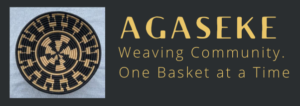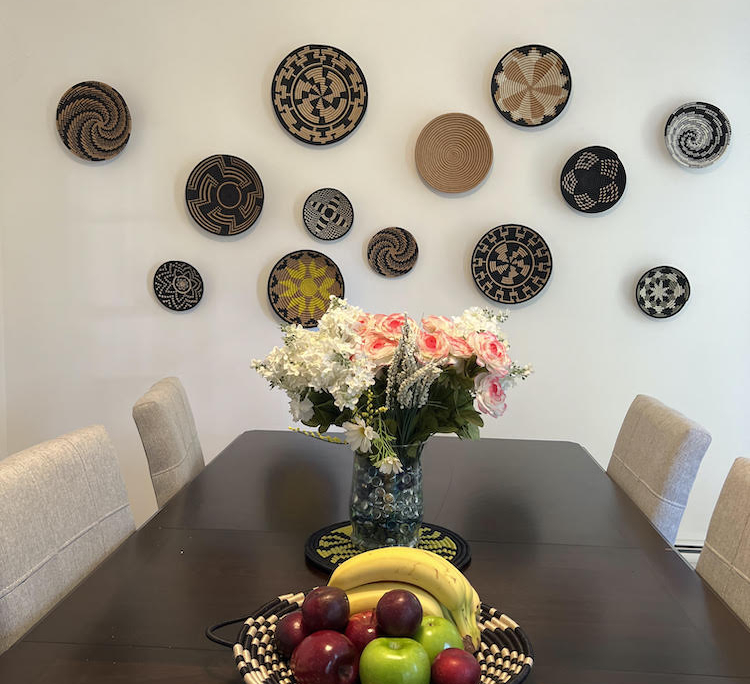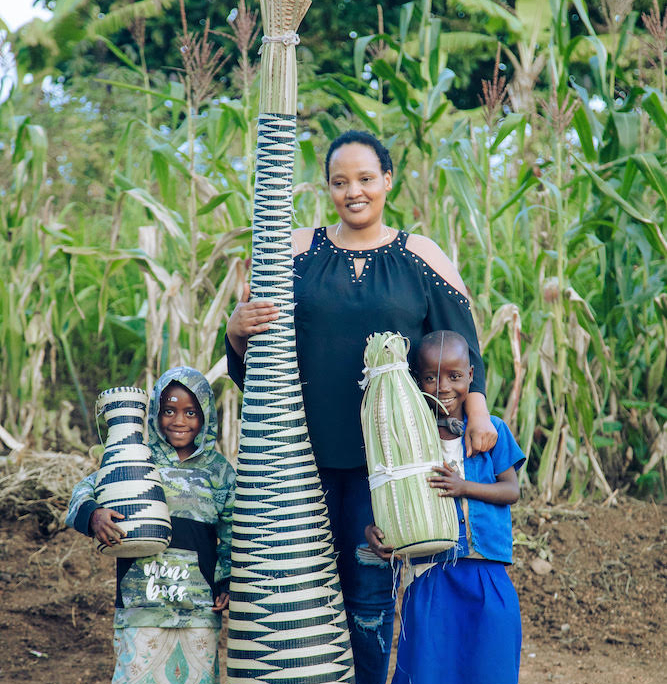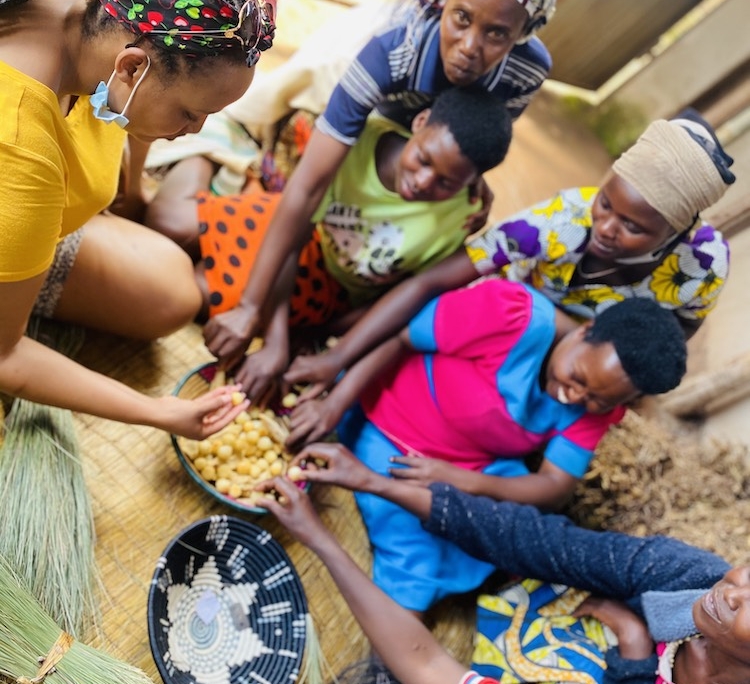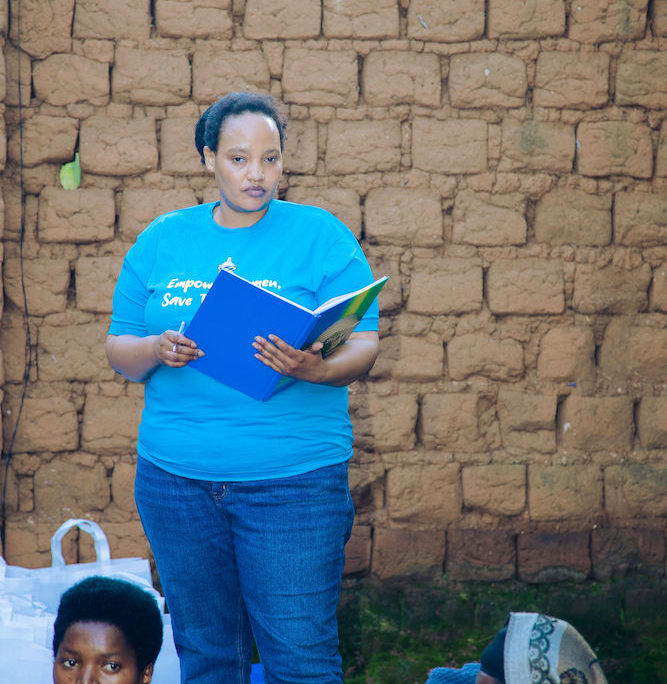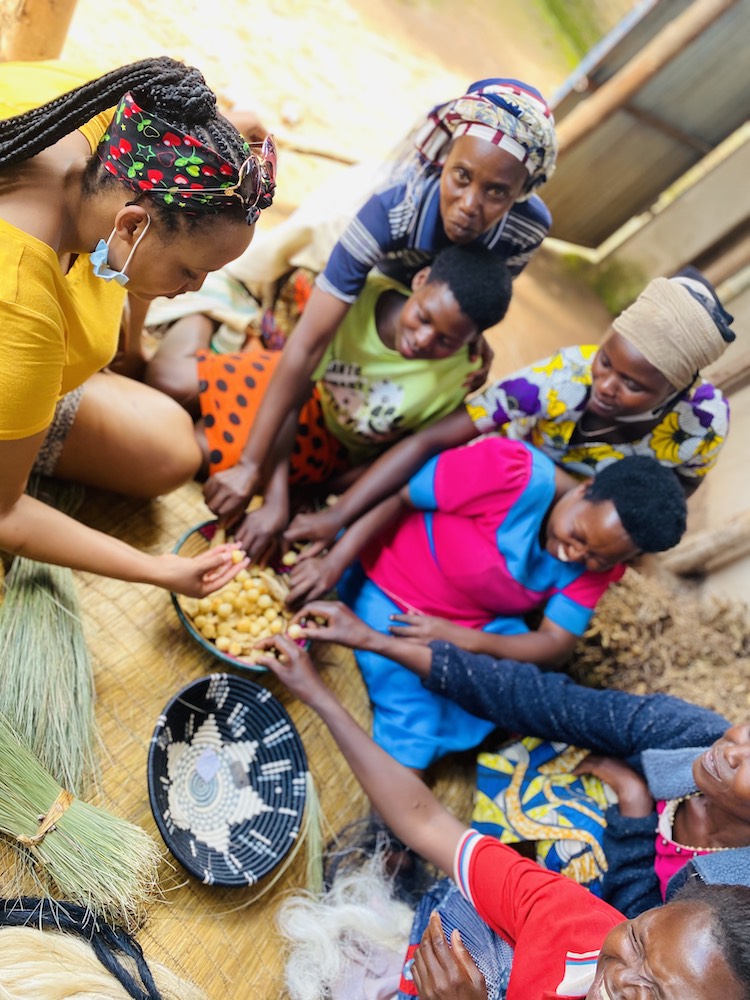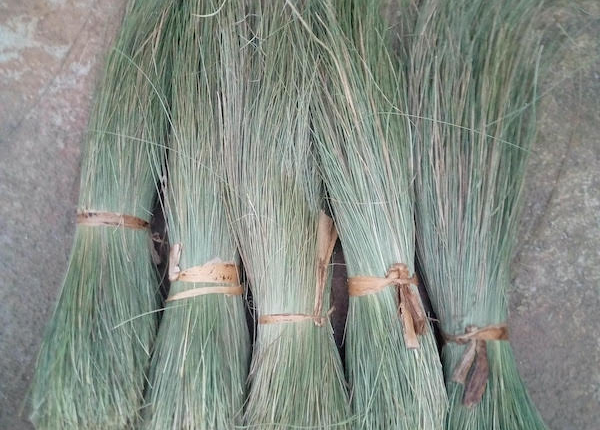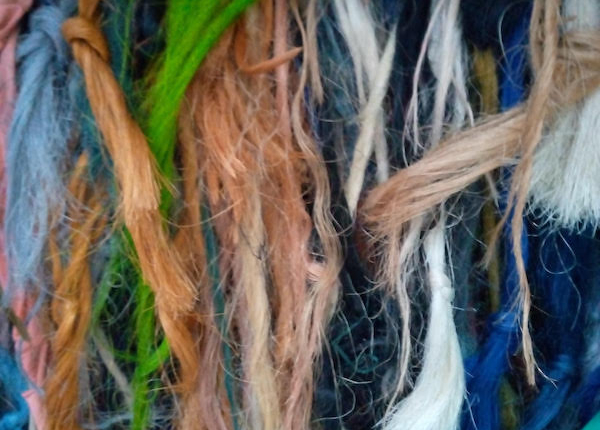About
Ange’s Story
Ange has memories from a very early age of sitting near her (grandmother), with a circle of women and as a form of play, began modeling the women weaving baskets.
Born in a refugee camp in Burundi and later moving back to her family’s country of origin, Rwanda she continued to learn the art of basket weaving from both her nyogokuru (grandmother) and mama (mother).
Five years ago, Ange made the decision to leave Rwanda and move to the United States. At the airport in Rwanda, Ange’s mother passed to her a package of grasses with a needle and thread, and sent her off with the parting words of
“Do not forget our culture.”
When Ange first arrived in the United States and was waiting to get documented so that she could work, she unpacked the grasses and began weaving baskets…. mostly out of boredom. Ange always thought of the baskets rather commonplace, nothing special… something the women of a village did. The baskets had an everyday usefulness.
The first baskets Ange wove in the U.S., she gifted to new friends or used to decorate her new home. Soon people asked her to make baskets for them and then others suggested that she should sell her baskets. Prior to COVID, Ange and another friend attended a few craft fairs where her baskets were well received.
It wasn’t until Ange saw the baskets through the eyes of her new friends and acquaintances in the U.S., that her own view of the baskets changed. She began to appreciate them more and see the beauty in the woven patterns and baskets.
With the quarantine during COVID, Ange was able to do a lot more basket weaving, some of which you will find on this site at SHOP BASKETS as well as at MARKINGS in Bath, Maine. Ange continues to also sell her baskets at a few craft fairs throughout the year.
Ange’s mother began coming to the USA in 2019 and spends part of each year here and the balance of the year in Rwanda. Each time that she returns from Rwanda, she brings bundles of grasses back with her for the making of new baskets. All the plant materials that are used in the baskets that Ange weaves come from Rwanda and help support the local women-owned economy.
When Ange, realized that there was interest in her baskets in the US, she began to think that perhaps she could collaborate in basket weaving with women from rural communities in Rwanda, offering them the ability to support themselves and their children’s education.
Ange returned to Rwanda in 2021, spending time with circles of women making baskets and sharing stories. She also began sponsoring children in local schools.
Ange is committed to sending a portion of the profits from her basket sales back to Rwanda to support single mothers and sending their children to school. Her long-term aspiration is to work with women directly in Rwanda to make baskets for the USA market.
“I create baskets and earrings made of sisal plants and sweet grass using a needle. Whenever I am free, I design each piece with gentleness, skill, and love to achieve special and unique creations. I use half of the sales proceeds to support women and their children from my country to sustain themselves and fight poverty.”
How Baskets are Made
Each basket is hand woven with dyed sisal wrapped around fragrant sweetgrass. The sweet grass is used in its natural dried state. The sisal and sweet grass plants are grown by women in Rwanda, harvested, the fibers extracted and then the sisal is hand dyed. In addition to making useful tabletop containers for holding fruit and other objects, the baskets can also be used for hung wall art.
History of Rwanda Baskets
Basket weaving is an age-old pastime in Rwanda. In the evening, women and girls traditionally gather and weave baskets. This activity bonded neighbors and family members across generations. Stories are shared and young girls are taught how to weave at the knee of their mother or grandmother.
The practice of basket weaving was passed down from mother to daughter, from generation to generation, and symbolizing a rite of passage into womanhood.
Many of the basket patterns of today, are the same patterns that have been taught and passed on for generations.
